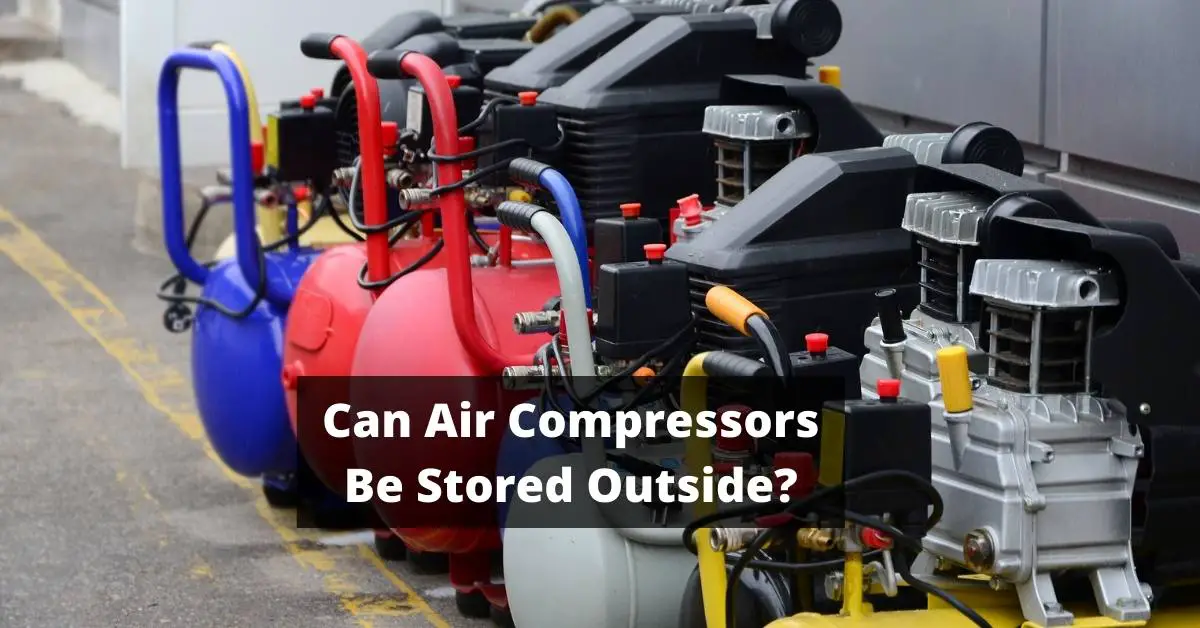As a professional technician, I have encountered various issues with air compressors, and one of the most common ones is the need to reset them. When it comes to resetting an Atlas Copco air compressor, there are a few steps that you need to follow to ensure that it operates efficiently and effectively.
In this article, I will guide you through the process of resetting your Atlas Copco air compressor. This process includes identifying the problem, disconnecting power, releasing pressure from the system, resetting the controller, reconnecting power, and testing the compressor.
Air compressors are essential in various industries such as manufacturing plants and auto repair shops because they help power pneumatic tools used for heavy-duty tasks. However, when they malfunction or stop working altogether due to electrical or mechanical problems, it can create significant downtime resulting in lost productivity and revenue. By knowing how to reset your Atlas Copco air compressor correctly and regularly maintaining it over time can prevent these problems from happening frequently while also extending its lifespan.
So let’s dive into this step-by-step guide on how to reset an Atlas Copco air compressor!
Identify the Problem
You may be experiencing an issue with your industrial pneumatic equipment that requires identifying the root cause of its malfunction. Before resetting your Atlas Copco air compressor, it’s important to determine what went wrong in the first place.
Some common problems include motor overload, low oil pressure, and high temperature shutdowns. By pinpointing the specific issue, you can better address and resolve it.
One way to identify the problem is by checking for error codes on the compressor’s control panel or monitoring system. These codes provide insight into what may have caused the malfunction and can guide you in troubleshooting.
Additionally, inspecting physical components such as belts, hoses, and filters can also help reveal any issues. It’s essential to accurately diagnose the problem before attempting a reset because resetting without fixing the underlying issue could lead to further damage or even danger.
Once you’ve identified what’s causing your Atlas Copco air compressor to malfunction, you can move onto disconnecting the power to initiate a reset process that will hopefully restore proper functioning.
Disconnect the Power
Well, isn’t it just a hoot to unplug the darn thing? Disconnecting the power is the first step in resetting an Atlas Copco air compressor. It may seem like a no-brainer, but it’s essential to ensure your safety and prevent any further damage to the machine.
To disconnect the power, you need to locate the power source of your Atlas Copco air compressor. Depending on where it’s installed, you might find it plugged into an electrical outlet or hardwired into a circuit breaker. If you’re unsure where to find it, consult your user manual or contact a professional for assistance.
Once you’ve located the power source, unplug the compressor from its electrical outlet or turn off its circuit breaker. Make sure that there are no other sources of electricity running through your system before proceeding with resetting your Atlas Copco air compressor. This not only protects you from electrical shock but also ensures that there won’t be any damage done to your machine during the reset process.
With power disconnected, we can now move onto releasing pressure from the system. This is crucial before attempting any maintenance work on an air compressor since compressed air holds tremendous energy that can cause significant harm if released suddenly without precautions.
Release Pressure from the System
Before attempting any maintenance work, it’s crucial to release the compressed air from the system to avoid potential harm. This step is essential because pressurized air can cause physical injury or damage to equipment if not handled properly.
To release pressure from the system, locate the pressure switch on your Atlas Copco air compressor and turn it off. Once you have successfully turned off the pressure switch, go ahead and open up all valves in your system. These valves should be located near the regulator, after cooler, and moisture trap. By opening these valves, you allow for any residual compressed air in your system to escape slowly.
It’s important to note that releasing pressure from your Atlas Copco air compressor may take some time depending on how much compressed air is left in the tank. Once you’re confident there isn’t any more compressed air left in your system, move onto resetting the controller by following our next set of directions.
Reset the Controller
Have you ever been in a situation where your system wasn’t functioning properly, and you started to wonder if resetting the controller could be the solution? If so, then you’re not alone. Resetting the controller is one of the first things that come to mind when troubleshooting Atlas Copco air compressors.
The good news is that resetting the controller is a straightforward process that can often resolve any issues you may be experiencing. To reset the controller, start by pressing and holding down the ‘Enter’ button until all of the lights on the display turn off. Then, release the button and wait for a few seconds before pressing it again.
This should bring up an option to reset to factory settings. Press ‘Enter’ once more to confirm your selection, and your Atlas Copco air compressor will now be reset.
Once you’ve successfully reset your controller, it’s time to reconnect power to your system. But before doing so, make sure that all components are properly connected and securely fastened in place. Once everything is set up correctly, turn on power to your system and monitor its performance closely for any signs of malfunctioning or problems with pressure levels.
Reconnect the Power
Now it’s time for me to reconnect the power and get my Atlas Copco air compressor up and running again. Before doing so, I need to make sure that all the safety precautions are in place.
This includes checking that there are no loose wires or connections, ensuring that the power source is grounded, and wearing appropriate protective gear.
Once I’ve ensured that everything is safe, I can go ahead and connect the power back to the air compressor. To do this, I simply plug in the power cord to a reliable source of electricity. It’s important to note that if there was a fault with the electrical system that caused the initial problem, then it needs to be addressed before turning on the compressor again.
After reconnecting the power, I need to wait for a few minutes before testing whether my Atlas Copco air compressor has reset successfully. This will give it enough time to stabilize after being restarted.
At this point, it’s crucial to test out all functions of the compressor carefully and thoroughly before resuming operations as usual.
Test the Air Compressor
You’re about to witness the true power of your machine as you put it to the test and see just how much air it can pump out. After reconnecting the power, turn on the compressor and listen for any unusual noises. Ensure that all gauges are functioning properly and there’s no leakage from hoses or connectors.
Check if the pressure switch turns off at the predetermined cut-out pressure. Next, let the compressor run until it reaches its maximum capacity. You can determine this by checking the pressure gauge when it stops rising despite continuous operation. A fully charged tank should show a reading within 10% of its rated capacity.
If you notice any abnormalities in performance, such as slow pressurization or excessive noise levels, stop using your machine immediately and consult an expert. Testing your air compressor is crucial to ensuring that it runs smoothly and efficiently every time you use it.
Regular maintenance tips will help keep your compressor functioning at optimal levels for longer periods of time without experiencing problems like overheating or clogged filters. With these tips in mind, you’ll be able to enjoy reliable performance from your Atlas Copco air compressor for years to come!
Regular Maintenance Tips
Maintaining your machine is essential for its longevity and optimal performance, so let’s explore some tips to keep your compressor running smoothly.
First and foremost, it’s important to regularly check the oil levels of your atlas copco air compressor. The oil should be changed every 1000-2000 hours of use or as recommended by the manufacturer. This will ensure that the internal components of the compressor remain lubricated and protected from wear and tear.
In addition to regular oil changes, it’s crucial to clean or replace the air filter on a regular basis. A dirty air filter can restrict airflow, causing the compressor to work harder than necessary and potentially leading to overheating or other issues. It’s best practice to clean or replace the air filter every 500-1000 hours of use, depending on operating conditions.
Lastly, keeping an eye on any leaks in your compressed air system will help prevent costly repairs down the line. Regularly inspecting hoses and connections for damage will allow you to catch any potential issues before they become major problems. Additionally, checking pressure gauges during operation can help identify any fluctuations that may indicate a leak in the system.
By following these maintenance tips, you can ensure that your atlas copco air compressor remains in top working condition for years to come. Taking care of your machine not only prolongs its life but also ensures safe operation while saving time and money in repairs down the road.
Conclusion
In conclusion, resetting an Atlas Copco air compressor may seem daunting at first, but it’s a manageable task that can be accomplished in just a few easy steps. By following the outlined procedure, you can ensure that your machine is back up and running smoothly in no time.
To reset the air compressor, first, identify the problem. Then, disconnect power and release pressure from the system. After that, reset the controller, reconnect power, and test the air compressor.
Regular maintenance is crucial to keep your air compressor operating efficiently. Simple tasks such as checking filters and oil levels should be performed periodically to avoid any major issues down the line. Remember, "an ounce of prevention is worth a pound of cure".
Overall, knowing how to reset an Atlas Copco air compressor and performing routine maintenance are important skills for anyone who works with this type of machinery. With these tips and tricks under your belt, you’ll be able to operate your air compressor with confidence for years to come.


